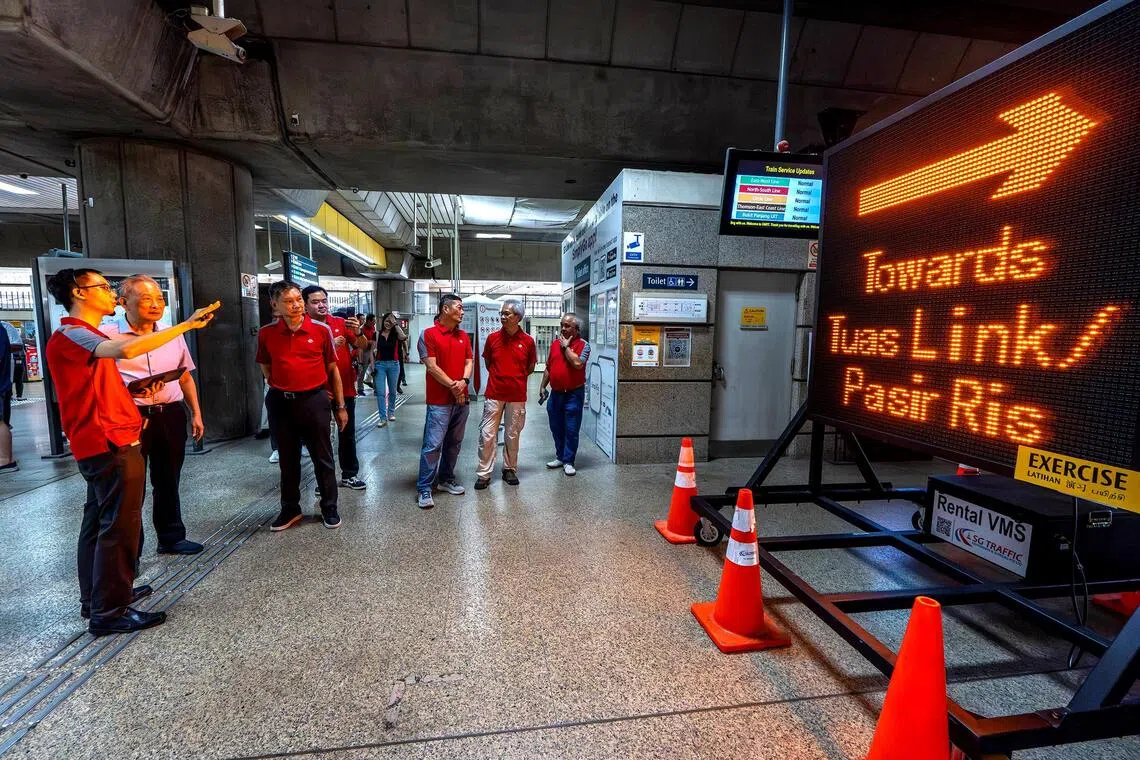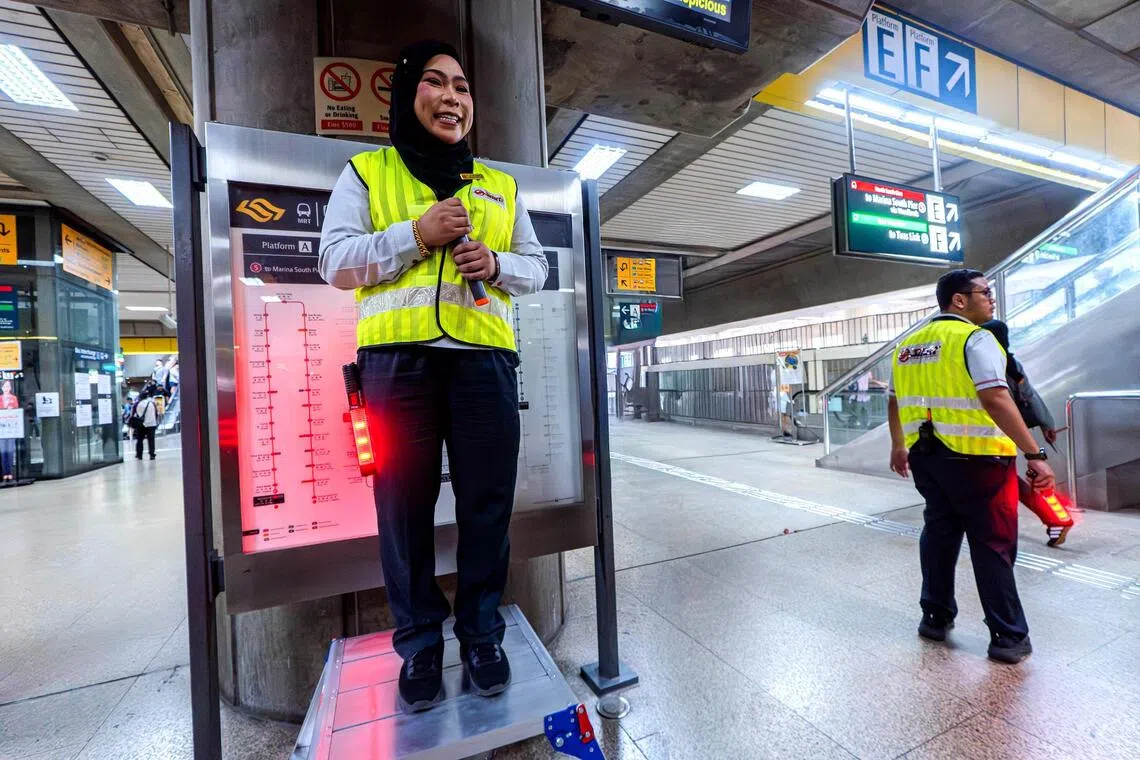New measures to handle rail disruptions being tested at Jurong East MRT station; wider roll-out planned
Sign up now: Get ST's newsletters delivered to your inbox

Larger and more prominent way-finding signs being used at Jurong East MRT station during a simulated train disruption.
PHOTO: SMRT
Follow topic:
- SMRT is testing enhanced crowd management at Jurong East MRT, including more staff, better equipment, and clearer visual communication tools.
- Improved way-finding signage, digital displays, larger signs, and directional guidance via Westgate mall will help commuters locate bridging bus services.
- A dedicated crisis support team will be deployed to assist station staff during disruptions; these improvements will extend to other major interchanges.
AI generated
SINGAPORE – Since September, new crowd management measures and way-finding signs are being tested at Jurong East MRT station to improve SMRT’s response to rail disruptions.
These will be rolled out progressively to other major interchanges operated by SMRT, the rail operator told The Straits Times.
It said in a Facebook post on Sept 10 that Jurong East station – the busiest interchange on the North-South and East-West lines – has improved measures in place to deal with rail disruptions.
These include the deployment of more staff on the ground and enhanced crowd management measures, such as stationing staff on mini elevated platforms and providing them with high-visibility vests, light sticks, whistles and portable speakers, as well as loud hailers that can broadcast recorded announcements.
Such upgrades will enable clear communication at the station and ensure that passengers have better visibility of station staff, said SMRT.

SMRT station staff have mini elevated platforms to stand on, high-visbility vests, light sticks, whistles, loudhailers and portable speakers.
PHOTO: SMRT
Additionally, beacons at certain bus stops can be switched on remotely to promptly inform bus captains of the activation of free regular bus services.
Other improvements include digital way-finding signs that display clear directions and provide real-time service updates.
To better guide commuters to the designated bus stops for the free regular and bridging bus services between affected MRT stations, life-sized standees and larger signs posted on pillars will also be used.
SMRT said these improvements are especially useful in areas blocked by construction hoardings put up for ongoing integration works for the upcoming Jurong Region Line.
Slated to open in three stages from 2027 to 2029, the Jurong Region Line will improve connectivity in the western part of Singapore
There have been a series of recent MRT disruptions, including a two-hour disruption on the Thomson-East Coast Line fault in the power supply system on the East-West Line
Another upgrade being tested at Jurong East station is improved access to bus stops that bridging bus services call at, with directional signs within the nearby Westgate mall, and bigger and clearer route markers at overhead bridges and linkways leading to the bus stops.

Way-finding signs are made more prominent so that passengers know where to go to board free regular and bridging bus services when there is a train disruption.
PHOTO: SMRT
The rail operator added that Jurong East station will have a dedicated crisis support team that can be activated readily to support station staff in helping commuters during incidents.
In response to queries from ST, SMRT said on Sept 12 that this team comprises staff from various departments in the company, and will be mobilised to direct passengers during disruptions to train services.
It added that the team members, in addition to being familiar with the layout and operations of their designated stations, are trained to manage crowds and help commuters.
“This ensures they can respond swiftly and effectively to support both commuters and station staff during disruptions,” said SMRT.
Noting the scale and complexity posed by certain MRT stations – such as Jurong East station, which faces additional challenges from the ongoing construction of the Jurong Region Line – SMRT said it must continuously improve its approach to handling rail disruptions.
The operator added that it is working to continually improve its visual and announcement systems to ensure clearer guidance and timely updates for passengers during disruptions.
It said it will progressively extend these improvements to other major interchange stations, based on positive outcomes of the tests at Jurong East station.
While SMRT did not identify them, the other interchange stations it operates include Buona Vista, City Hall, Raffles Place, Bishan and Woodlands stations.
The reliability of Singapore’s MRT network in the 12 months ended in June 2025 fell to its lowest level since 2020


